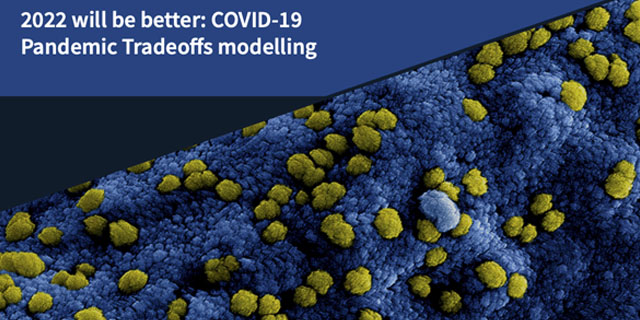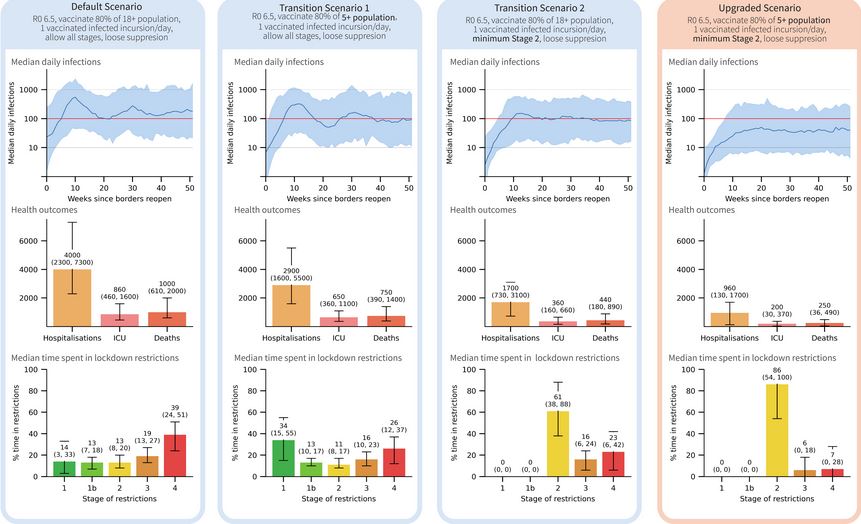COVID-19 Pandemic Trade-Offs
This 'COVID-19 Pandemic Trade-Offs' Report throws light on what next year might look like once we open up to the world.
'2022 will be better' - Read the Pandemic Trade-Offs Report here (PDF 9.0 MB).

We model 432 scenarios for combinations of:
1.virus reproductive number (R0)
2.vaccine coverage,
3.minimum age to be eligible for vaccination,
4.how open our borders are to quarantine-free travel, and
5.the within-country suppression strategy, and
6.the acceptable range of restriction levels
Default Strategy:
We start with a default strategy that we think many people have in mind: 80% of adults vaccinated, moderate opening of borders, and a loose suppression strategy in-country that tries to keep cases well within what our health services can manage.
This keeps the health loss well in check – ‘only’ about 4000 hospitalisations over a year in a state the size of Victoria. However, to achieve this the default strategy would see us in lockdown 39% of the time (uncertainty range 12% to 62%). We have to do better.
Upgraded Strategy:
With an upgraded scenario that includes 5-plus-year-olds 80% vaccinated and has a minimum level of public health and social measures that we do not go below (e.g. density limits in hospitality, work at home when you can), the health burden reduces three quarters (130 to 1800 hospitalisations over the year and 36 to 490 deaths over the year, in a state the size of Victoria). But we still see an expected 14% of time in lockdown – with a probability it could still be half the time in lockdown in some of our simulations. We have to do better.
Innovative strategy:
90% vaccination coverage of both adults and children drives the time in lockdown down to zero. And there are INNOVATIONS that our modelling suggests will also help: improved ventilation and filtration in indoor spaces, rapid antigen testing and Bluetooth apps that actually work all help reduce our reliance on lockdowns
We will need as high vaccine coverage as we can achieve and innovations to not only reduce our reliance on lockdowns, but also to manage the inevitable waning vaccine immunity we will confront next year before we roll out boosters.
That all said, there is a pathway to and through 2022 that will be better than what we experienced in 2020 and 2021.
High Definition version (JPG 7.1 MB)
